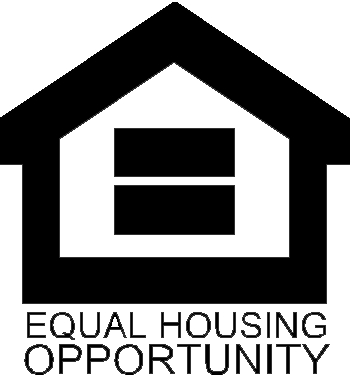
‘Homework’: The Rise of the Home Office
Families cramped together around a kitchen table, working, and learning online isn’t sustainable for productivity. Now, more home builders and interior designers are carving out workspaces.
October 13, 2020 by Barbara Ballinger
3 Takeaways:
- More builders are looking for ways to meet homeowners’ desire for private workspace.
- One solution for existing homes is to steal off space currently part of a laundry room, pantry, or hallway.
- Almost any variation of a home office will add value to a home.
Even before the pandemic, the work-from-home trend was growing in popularity. Improved technology and connectivity are allowing people to be more productive at home as employers have offered greater flexibility. But now that COVID-19 has made working from home even more prevalent—coupled with students learning online—many families are finding themselves crowded around the kitchen table or staking out various nooks to accomplish tasks on their laptops or tablets.
Mary Cook, founder of a Chicago-based commercial interior design firm, Mary Cook Associates, has experienced this challenge firsthand. She took the dining room table for her office in her suburban house; one of her three children claimed the sitting area in the parents’ suite, another picked the furnished basement, and the third chose a table in the family room. Fortunately, Cook’s husband is retired and so doesn’t need to compete for working space.
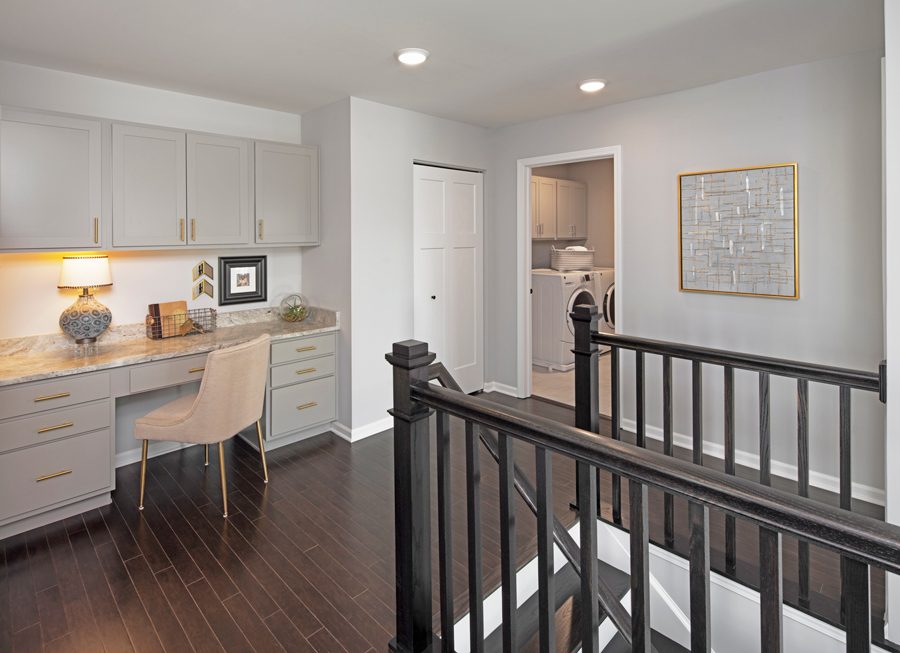
The finagling has made real estate professionals note the need for more functional, designated work-from-home solutions. This has led to the creation of home offices using two techniques: reconfiguring existing spaces or adding new square footage. These new home office designs vary in size and location—some near the main living space or bedrooms, others in basements or attics. There’s also the trend of outdoor accessory dwelling units if the plot size and local building codes permit them.
In addition, some new homes might soon offer multiple workspace options on different levels, says Jeff Benach, a principal of Lexington Homes, a Chicago-area homebuilder. For years, his firm’s plans have included a flexible space on the main level of their three-story townhome design that some homeowners use as an office.
“With the pandemic, more buyers—maybe 50% more—are interested in that plan because of the potential for having an office or e-learning space,” Benach says. “It’s become a bigger priority, and we’ll include it in more designs and communities.”
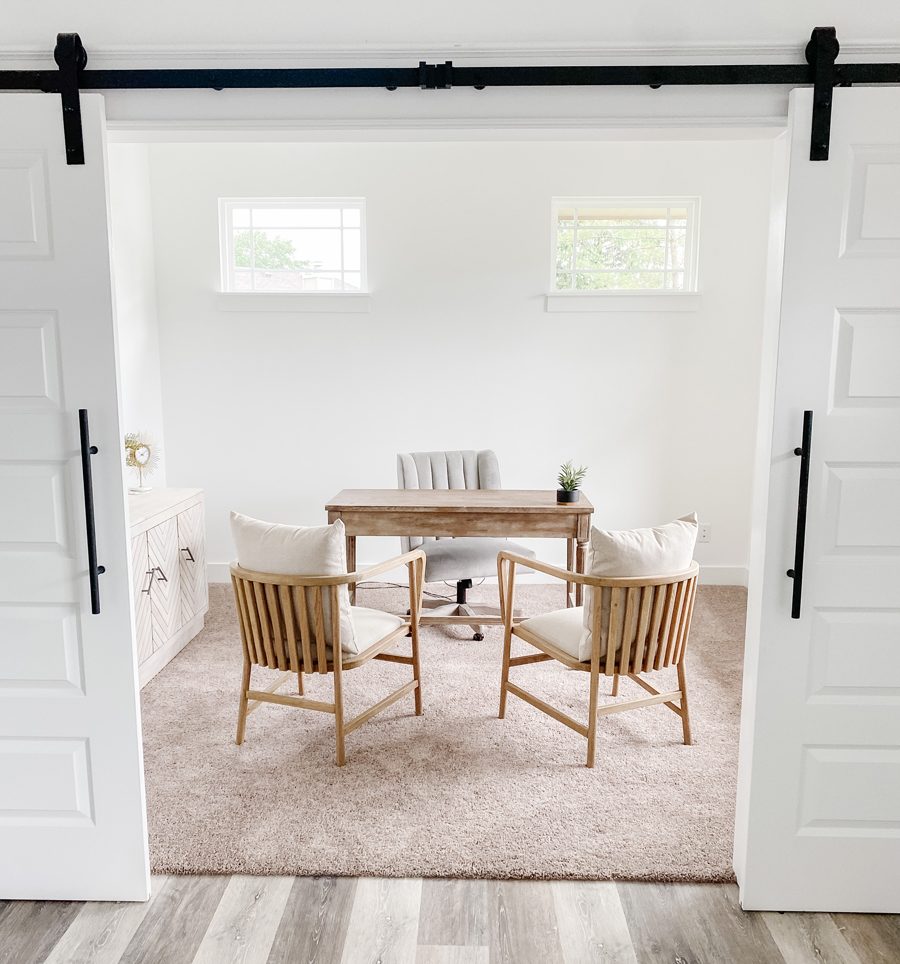
The company also offers options in other designs, including a lower-level finished space, a loft near bedrooms on an upper level, and a built-in desk with shelves at the top of a stairway.
Pyatt Builders, based in Carmel, Ind., regularly includes a flexible room in its 2,000-square-foot new homes, which the company is now emphasizing on social media and in its email blasts. “It can work as a home office or remote-learning classroom,” says Todd Pyatt, owner and president. Because of concerns around COVID-19 and more homeowners’ desire for private workspace, the company is considering including both a home office and a space designed with more flexibility in its 2021 construction projects, Pyatt says.
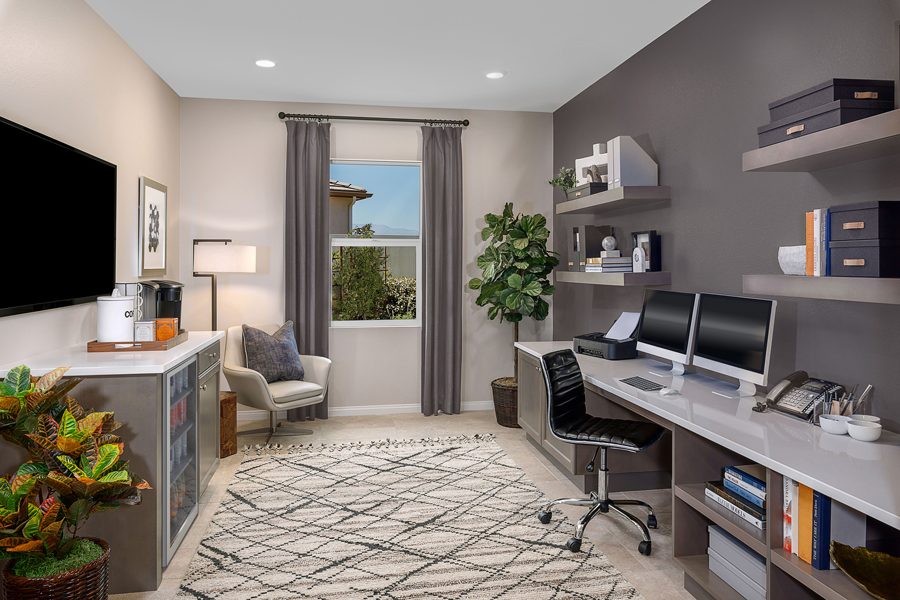
One of the country’s largest homebuilders, Los Angeles–based KB Home, recently redesigned some plans that include a fully outfitted home office.
“It’s the first time we’ve specifically offered a dedicated workspace with a range of options that provide an affordable work-from-home experience,” says Jeffrey Mezger, chairman, president, and CEO. The design features a built-in workstation with cabinet space, open shelving, and an upgraded electrical package. Home buyers can customize the space more with soundproofing, lighting, ceiling fans, window treatments—even with a beverage center, half-bath, and outdoor entry.
“The company will add options to meet clients’ evolving needs,” Mezger says. Two of the company’s California communities will introduce the concept, after which the option will be available nationally.
Recognizing the demand for private conversations, another homebuilder, Toll Brothers, based in Horsham, Penn., is developing matching home offices for couples.
Cook, who designs model homes for the company in several markets, says people tend to speak louder when they are on a call or in an online meeting than they do in person. She also points out that home offices work best with enough counter or desk space to spread out papers and set up equipment. Well-designed offices, she says, should be flexible enough to meet the needs of different family members at different times because most homes aren’t large enough to include a separate office for each person.
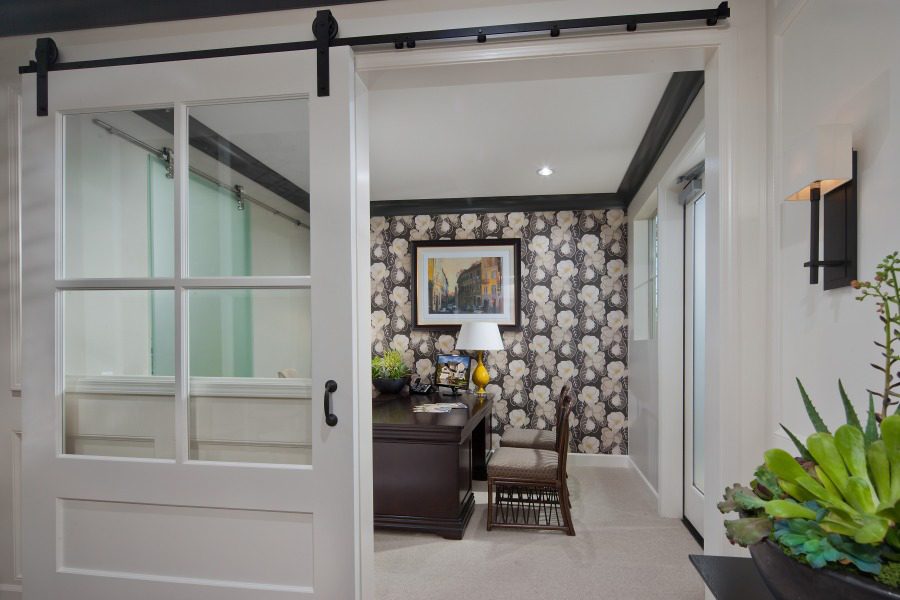
However, more important than size is creating a quiet space. Before the pandemic hit, KTGY Architecture + Planning used to design “home management center” desks in high traffic areas. Now the company is brainstorming how to close off those centers. Making a space that could be as small as a phone booth with a door would let residents take a call or have a Zoom meeting in private, says Jonathan Boriack, associate principal in the firm’s Oakland office. “It’s not a place where you’d work all day,” he says. His firm’s other solutions are to steal space from a laundry room, pantry, or hallway. “The challenge is to control noise,” he says.
The good news for homeowners who incorporate almost any variation of a home office is that they may be adding value to their home now and beyond. “Remote work is here to stay,” Boriack says.
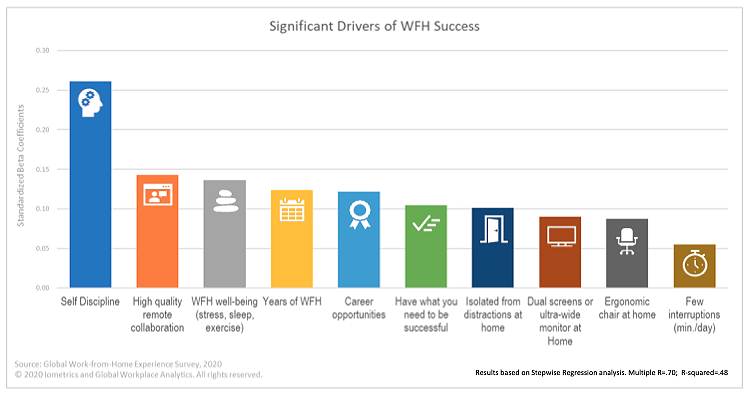
The Stats
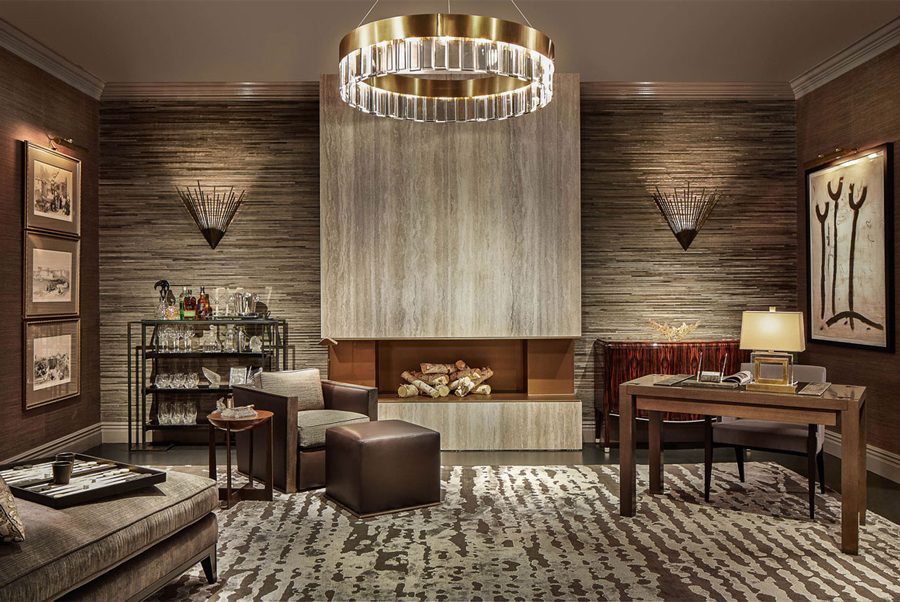
Despite some imperfect workspaces, 86% of North American workers who responded to a March 2020 survey from San Diego–based Global Workplace Analytics, a research and consulting firm, said they felt highly productive working from home, particularly because there were fewer interruptions than in their workplace offices. As the effects of the pandemic have lingered, many workers have been reluctant to return to offices and classrooms, and the work-from-home trend is expected to continue. In a survey from 451 Research, an advisory firm based in New York City, nearly 80% of employers say they’ve established or have expanded their work-from-home policies, and 67% expect those policies to remain in place. Three of the greatest predictors of work-from-home success are self-discipline, high quality remote collaboration, and well-being, according to Global Workplace Analytics.

Barbara Ballinger
Barbara Ballinger is a freelance writer and the author of several books on real estate, architecture, and remodeling, including The Kitchen Bible: Designing the Perfect Culinary Space (Images Publishing, 2014). Barbara’s most recent book is The Garden Bible: Designing Your Perfect Outdoor Space, co-authored with Michael Glassman (Images, 201

